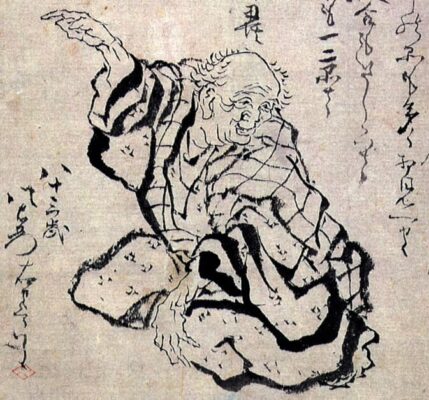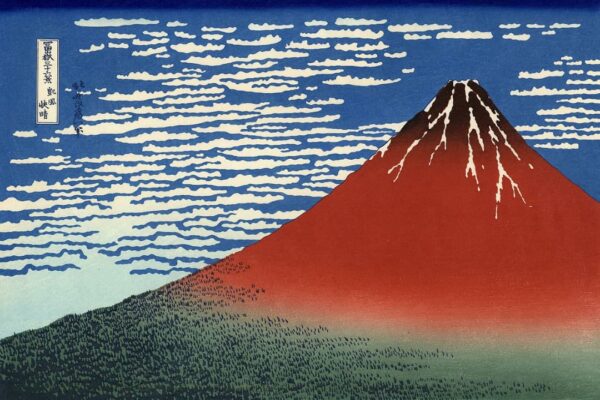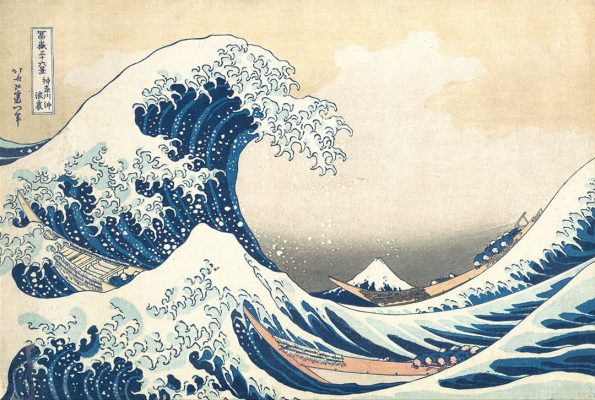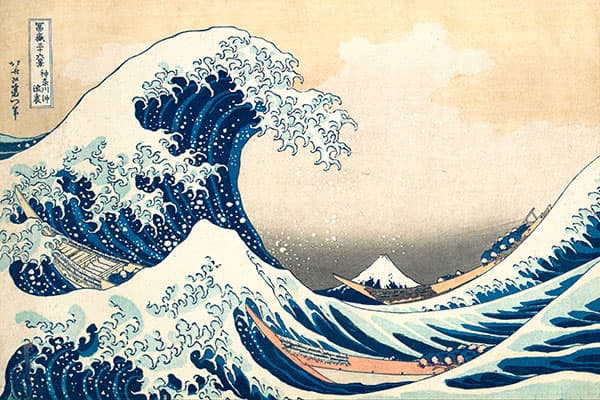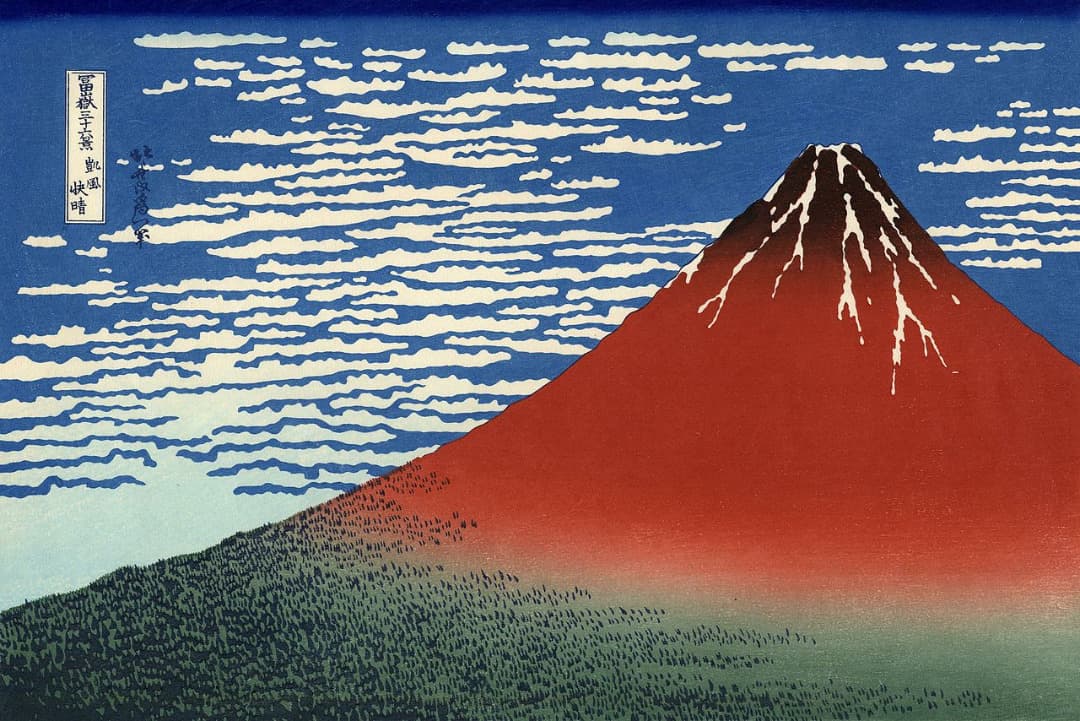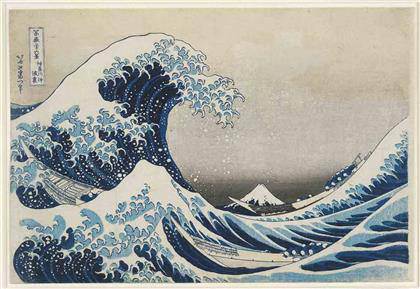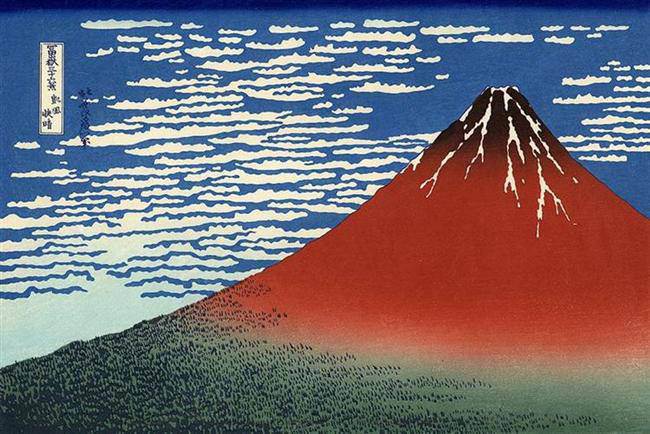Hokusai
“Hokusai no es sólo un artista entre otros en el mundo. Es una isla, un continente, un mundo entero en sí mismo…”
Edgar Degas
De entre todos los grandes maestros de la escuela Ukiyo-e del periodo Edo, ninguno tuvo la importancia e influencia de Hokusai, artista longevo, valiente y prolífico, creador de obras icónicas tanto en su Japón natal como en Europa, que incluyeron de forma decisiva en artistas como Vincent van Gogh o Claude Monet, por lo que se puede decir sin temor a equivocarse que el arte de Hokusai tuvo una importancia notable en el desarrollo de las vanguardias del siglo XX.
Imagen: Katsushika Hokusai: “Autorretrato a los 83 años de edad”
Hokusai, cuyo verdadero nombre era Tokitaro, nació en 1760 cerca de Edo, hoy Tokio. Siendo adolescente trabajó en el taller de grabados, donde aprendió la técnica de la xilografía. Con diecinueve años, el joven Hokusai ya exponía sus obras bajo distintos seudónimos. No fue hasta 1797 cuando adoptó de forma más o menos permanente el nombre de Hokusai.
Comienza entonces lo que se considera la época de madurez del artista. La obra de Hokusai abarca una enorme variedad de temáticas: desde libros ilustrados con poemas hasta retratos, incluyendo obras eróticas. En palabras de Kathleen Krull, «siendo un ‘showman’ nato, Hokusai atrajo la atención al montar representaciones públicas de su arte» (Kathleen Krull, «Lives of the Artists», 1995). En 1817, Hokusai ve su fama aumentar de forma notable al pintar en vivo y en directo su pintura del “Gran Daruma”, una obra de 18 x 11 metros que fue lamentablemente destruida durante la Segunda Guerra Mundial. Si resulta impresionante pensar en el mérito de pintar una obra de este tamaño, resulta todavía más asombroso saber que, unos 13 años antes, Hokusai había pintado una obra de temática similar, pero muchísimo más grande, de la que poco se sabe hoy en día.
Katsushika Hokusai: “Fuji Rojo”, c.1826-31. Grabado. 25,7 × 38 cm ·· Katsushika Hokusai: “La gran ola de Kanagawa”, 1830-33. Grabado. 25,7 × 38 cm
Con cerca de setenta años, Hokusai realiza la que es probablemente su obra magna: su serie de “Treinta y seis vistas del monte Fuji”, una serie de grabados que incluyen obras tan famosas como el “Fuji rojo” y, sobre todo, “La Gran Ola de Kanagawa”, obra escogida por theartwolf en 2006 como una de las 50 obras maestras de la pintura. A esta serie seguiría “Cien vistas del monte Fuji”, serie de obras monocromas, en contraste con los colores vivos empleados en la serie anterior.
Katsushika Hokusai falleció en 1849, a los 88 años. Siguió pintando hasta el final de su vida, como demuestra el hecho de que su “Tigre en la nieve” data del mismo año de su muerte. Poco antes de morir, se dice que Hokusai escribió que “si el cielo me hubiera concedido cinco años más, podría haberme convertido en un verdadero pintor”.
Las obras de Hokusai, junto con las de otros artistas de la escuela Ukiyo-e, llegaron a París en la segunda mitad del siglo XIX, y fueron admiradas por artistas como Van Gogh, quien llegó a escribir a su hermano y marchante Theo: “todo mi arte está en cierto sentido basado en el arte japonés”.
G. Fernández · theartwolf.com
Más sobre Hokusai
Follow us on:

